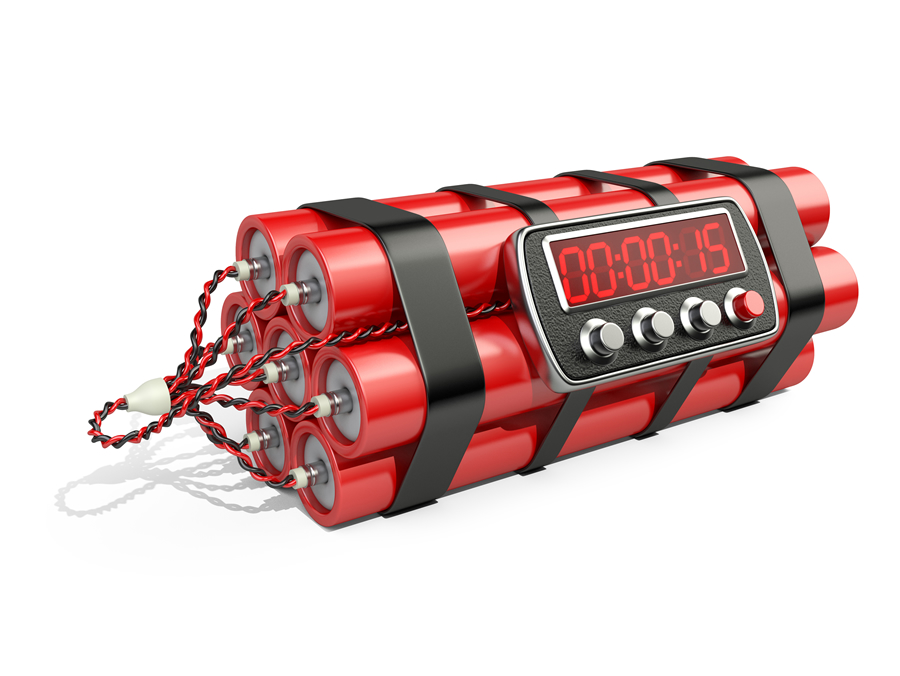Conventional wisdom has said to put as much away as possible into tax-deferred retirement vehicles, like an IRA or 401(k) because you will be in a lower tax bracket when you take out your money. The reality is that most people are in the same tax bracket, and some are even in a higher tax bracket. Compound that with the fact that taxes will likely go up because of our enormous national debt, and the tax picture looks even worse. If you have IRAs and 401(k)s worth more than a combined $1M, then you have a real tax time bomb waiting to explode on you and your heirs.
If you have been a diligent saver, you have built a large nest egg to see you through retirement and make sure you don’t become a burden on anyone else. You have had the benefit of not paying taxes on the money you put into your pre-tax IRA or 401(k). Now that you are close to or in retirement, taxes are staring you in the face. Every time you take a distribution to supplement your retirement income, a big chunk is withheld just to pay the taxes. Not surprisingly, “taxes” are the biggest complaint many retirees have.
If you have a few hundred thousand dollars in IRAs or 401(k)s, you can usually spread the distributions over a number of years, do small Roth conversions, and/or donate some to charity. This can help ease the tax burden. However, suppose you have over $1M in IRAs or 401(k)s. In that case, your distributions can create major tax headaches, especially after you turn 73 and must start taking Required Minimum Distributions (RMDs).
For example, if your IRA were $5M, you would be required to take a distribution of $200,000 per year on top of your Social Security and other income. This already pushes you into a higher bracket, and there is an additional tax on Medicare. If you had two children, they stand to inherit $5M ($2.5M each). When they inherit the money, they would be required to take it out over a maximum of 10 years, meaning they would each need to take out at least $250,000 per year. This would be taxed on top of their existing income. Talk about unintended tax consequences!
There are some tax planning strategies that can make a large difference for you and your heirs.
First, if you are charitably inclined, each year, you can donate a portion or all of your RMD (up to $100k) directly from your IRA to a charity, and the donation is tax-free. This Qualified Charitable Distribution (QCD) is the most tax-efficient way to get money out of your IRA since the tax rate is 0%.
Second, you can do a Roth conversion and “fill up” your tax bracket. If you are in the 24% tax bracket and have another $100,000 in income before going into the 32% tax bracket, you can choose to pay 24% tax on the $100,000 and “convert” it into a Roth. We typically withhold the taxes of $29,000 from the distribution (24% fed tax, 5% state tax), and the remaining $71,000 goes into the Roth to grow tax-free for the future. Keep in mind there will also be a small additional tax on Medicare.
Let’s look at one case for a client with $5M in an IRA/401k. Following conventional wisdom, they would leave their heirs $4.5M after taxes and distributions. However, only $1.6M of that has already been taxed. The heirs would still need to pay tax on $2.9M! In contrast, filling up the 24% bracket would convert roughly $100k annually into the Roth. At the end of the plan, they would pass on more money ($4.7M), with only $0.1M being subject to tax. The remaining $4.6M would be tax-free!
Conventional wisdom will only get you so far and shouldn’t be followed blindly. If you have a large IRA/401(k), consult with one of our private wealth managers or a qualified tax professional to see if there are strategies that can diffuse your tax time bomb.
Listen to a deep dive into diffusing the tax time bomb on the Power Up Wealth podcast.





One Comment